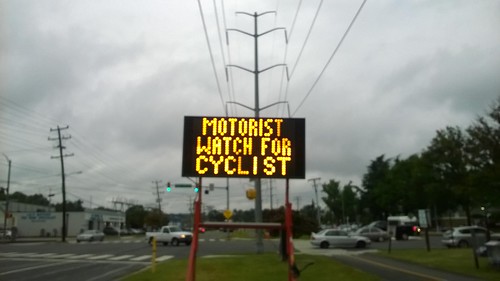
Cyclists need to obey those darn laws

Motorists? They just need to be careful
This is of course absurd. It makes sense only if cyclists are presumed to be scofflaws and motorists are law abiding folks who probably would be well advised to be careful of those scofflaw cyclists. In fact there is no evidence at all that cyclists are more (or less) law abiding than people driving cars. There is considerable evidence of course that when cyclists or motorists do dumb things and have accidents involving cyclists and cars, the cyclist suffers much greater consequences.
This is particularly ironic given the location, which is right where a major bike trail crosses a busy street. Under VA law, if the cyclist is required at this location to walk his bike and not ride in the crosswalk then this needs to be specifically posted, otherwise the cyclist is free to cross the street on his bicycle in the crosswalk. The obvious for accidents with the bike trail+crosswalk across Walter Reed is with left-hook and right-hook turn accidents from cars turning from S Four Mile Run Drive where the driver doesn't see the cyclist in the crosswalk because the motorist failed to exercise due care.
Ugh!
